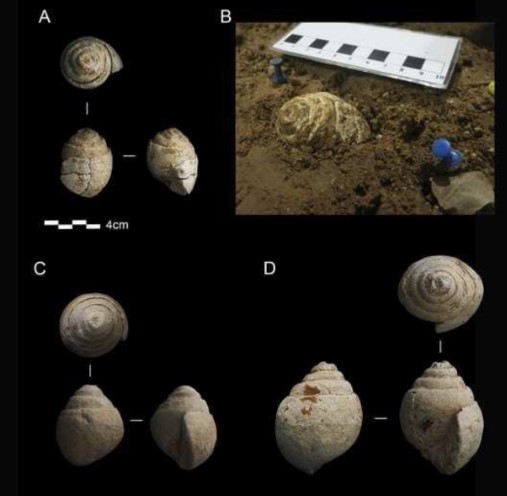A stash of 15 marine fossils has been found in a Neanderthal cave in northern Spain, indicating that the extinct hominids may have developed a passion for accumulating stuff in the same way that modern humans collect baseball cards, stamps, and memorabilia. Reporting the discovery, researchers say they currently have “no valid hypothesis” to explain the hoard of apparently useless objects, but suggest that the eye-catching specimens may have been gathered by Neanderthal children who found them entrancing.
The practice of collecting may seem like a pretty basic behavior, but it is in fact indicative of advanced cognition since it requires items to be imbued with symbolic meaning. The extent to which Neanderthals were capable of such abstract thought remains a topic of debate, although mounting evidence hints at their surprisingly complex imaginations.
For instance, the study authors point out that the ancient species produced art, cared for the elderly and disabled, and may even have developed religious practices including the worship of a “bear cult”. Returning to the point of their investigation, the researchers go on to list numerous examples of apparent collections assembled by Neanderthals.
In most cases, these assemblages consist of just one or two items, with the 15 fossils recovered from the Prado Vargas Cave representing a unique and unprecedented hoard. “These fossils can be understood as evidence of an artistic interest or an attraction or curiosity for the forms of nature,” write the study authors.
“Perhaps, like we do today, the people who collected them derived pleasure from the act of looking for them or finding them and keeping them,” they continue. Dated to between 39,800 and 54,600 years ago, the compilation of fossils comes from a time and place with no known Homo sapiens presence, which “suggest[s] that collecting activities and the associated abstract thinking were present in Neanderthals before the arrival of modern humans.”
Some of the fossils in the Neanderthals’ collection.
However, while the researchers insist that the fossils clearly “have some meaning and symbolize something,” they also concede that “the debate is on” as to who collected them and why. Despite having no solid answer to this question, the authors speculate that “they might have been collected by children.”
Noting that modern human kids are often passionate about amassing stickers, sea shells, and even bottle tops, the researchers highlight the fact that “the collection of objects is characteristic of childhood, and remains of Neanderthal children were found in Prado Vargas.”
“It could be that the youngest members of the group, fascinated by these forms, were the ones who started the collection,” they add.
Tugging a little harder on the thread that links our own behavior to that of our extinct relatives, the writers somewhat menacingly prophesy that “the Neanderthal groups that inhabited the Prado Vargas cave gathered and collected fossils, just as we look for fossils, even of these human species, to study them and finally “collect” them in museums.”
“This seems to become an infinite spiral through which, at some point, we will be part of what we collect.”
The study is published in the journal Quaternary.
Source Link: Neanderthal Children May Have Collected Fossils, Just Like Modern Kids Collect Stickers
